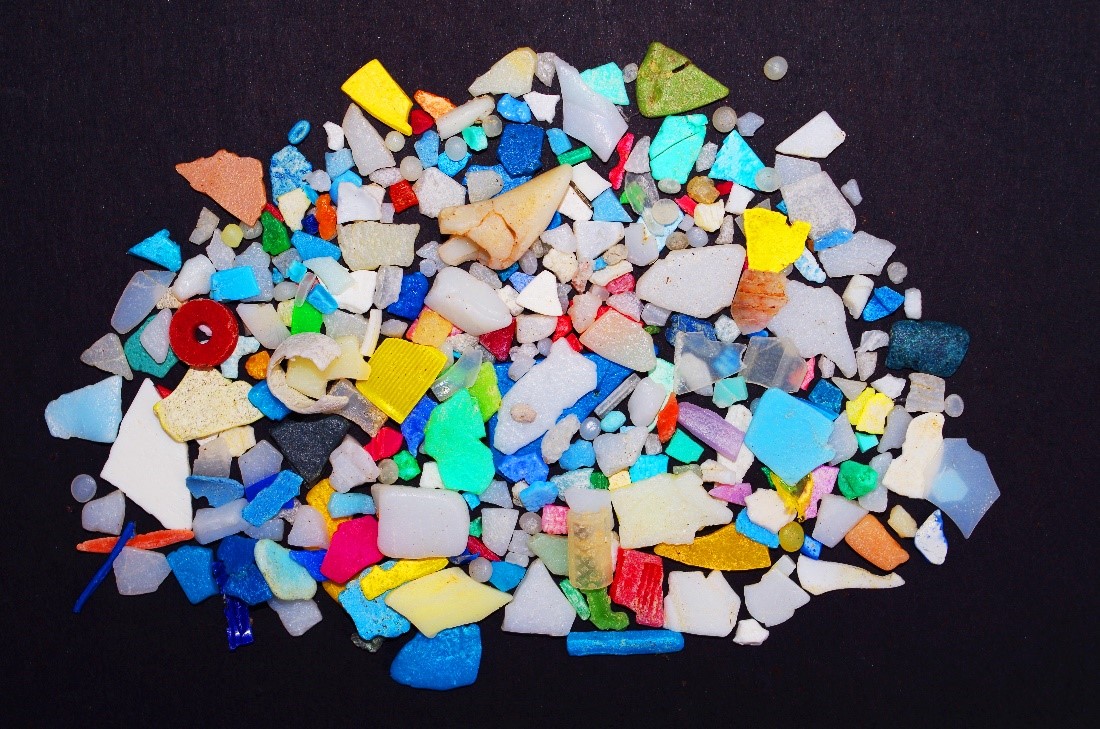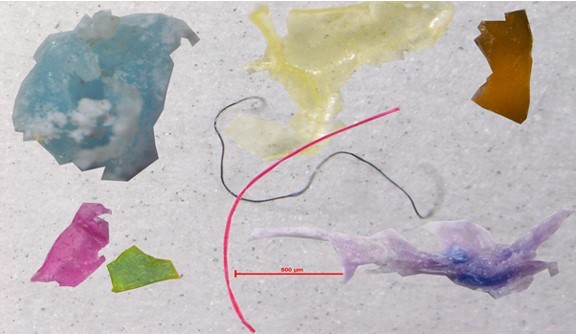Published online: October 2021
Synthesis by: Dr Kevin Simon, Nadia Dikareva, Amy Ockenden, Anastasia Zaleta; School of Environment, University of Auckland (k.simon @ auckland.ac.nz)

Figure 1. Microplastics largely derive from the continued breakdown of larger plastic pieces. (Photo credit: Wolfram Burner [CC BY-NC 2.0])
Plastic in the environment has been accumulating rapidly since mass production began in the 1950’s and concern has grown recently over the environmental damage it may cause. Plastic pollution is now variously described as an ‘Armageddon’, ‘Tsunami’, or ‘Crisis’ of plastic in popular press. This has led to exponential growth in research focused on plastic, particularly smaller ‘microplastics’, in the past decade. But what do we actually know about the ecological effects of microplastic pollution?
Most concern has focused on smaller plastic particles, micro- (>~1mm) or nano- (>~100μm), because of their greater likelihood of interacting with organisms. Nearly all of these tiny plastics derive from the breakdown of larger pieces of plastic in the environment and therefore are likely rather old (months to decades or longer). Microplastic is ubiquitous in most environments, including in Aotearoa, but we do not have a good understanding of sources and drivers of variation in the amounts of microplastic found in terrestrial and aquatic environments. Indeed, quantification of plastic in most environmental matrices is difficult and methods and reporting are only now being standardized. Nanoplastics are even more intractable to measure, consequently there are few estimates of amounts of them in the environment.
The main mechanisms of potential ecological harm caused by microplastics are via two avenues. First, ingestion of plastic by organisms may lead to internal damage or reduce feeding and assimilation. Second, chemicals associated with microplastics could be toxic to organisms that ingest them (i.e. a ‘trojan horse’ effect by which plastics transfer toxins). Those may be chemicals used to either create plastics or they could be chemicals in the environment that adsorb to plastics. This has been explored in a rapidly growing number of experiments, most of which are fairly simple toxicity assays in which individuals of a single species are dosed with varying amounts of plastic. Analysis of these experiments reveals one striking fact – most experiments use amounts of plastic many orders of magnitude higher than what is found in the real world. When effects are found they mostly occur at very high levels. Worse, lab and field studies rarely report in similar units making meaningful comparisons difficult. The ‘dose makes the poison’ is an old adage in toxicology. So far, we haven’t done a good job linking environmentally relevant doses of microplastic to ecological responses.

Figure 2. Concentrations of microplastic measured in the environment by field studies and concentrations of microplastic used in lab studies. Lab studies either documented ingestion only or measured effects on organisms (statistical significance of effects indicated). Data are for studies of freshwater systems from Ockenden et al. (2021).
We are in the early days of research where we are still figuring out how to do ecologically relevant studies of plastic pollution. Much of the research already done is of limited ecological relevance, but that is improving. Newer studies are using a wider array of plastics at relevant amounts in more realistic experimental designs across diverse organisms and ecological systems. Fortunately, results so far suggest microplastics at current environmental levels are not overly harmful in most instances. The ‘trojan horse’ effect in particular is highly touted but rarely demonstrated to be an ecologically meaningful problem. There is, however, little prospect for removing microplastic from the environment and our use of plastic is growing rapidly. The future is concerning unless we dramatically reduce wasteful use of plastic to avoid a real horror show.

Figure 3. Small plastic particles as seen under a microscope. These particles are ubiquitous in most environments are of growing concern. (Photo credit: Kevin Simon)
Relevant literature:
Catarino, A. I., J. Kramm, C. Völker, T. B. Henry, and G. Everaert. 2021. Risk posed by microplastics: Scientific evidence and public perception. Current Opinion in Green and Sustainable Chemistry 29:100467. https://doi.org/10.1016/j.cogsc.2021.100467
Dikareva, N., and K. S. Simon. 2019. Microplastic pollution in streams spanning an urbanisation gradient. Environmental Pollution 250:292–299. https://doi.org/10.1016/j.envpol.2019.03.105
Lim, X. 2021. Microplastics are everywhere — but are they harmful? Nature 593:22–25. https://doi.org/10.1038/d41586-021-01143-3
Ockenden, A., L. A. Tremblay, N. Dikareva, and K. S. Simon. 2021. Towards more ecologically relevant investigations of the impacts of microplastic pollution in freshwater ecosystems. Science of The Total Environment 792:148507. https://doi.org/10.1016/j.scitotenv.2021.148507
de Ruijter, V. N., P. E. Redondo-Hasselerharm, T. Gouin, and A. A. Koelmans. 2020. Quality Criteria for Microplastic Effect Studies in the Context of Risk Assessment: A Critical Review. Environmental Science & Technology 54:11692–11705. https://doi.org/10.1021/acs.est.0c03057
